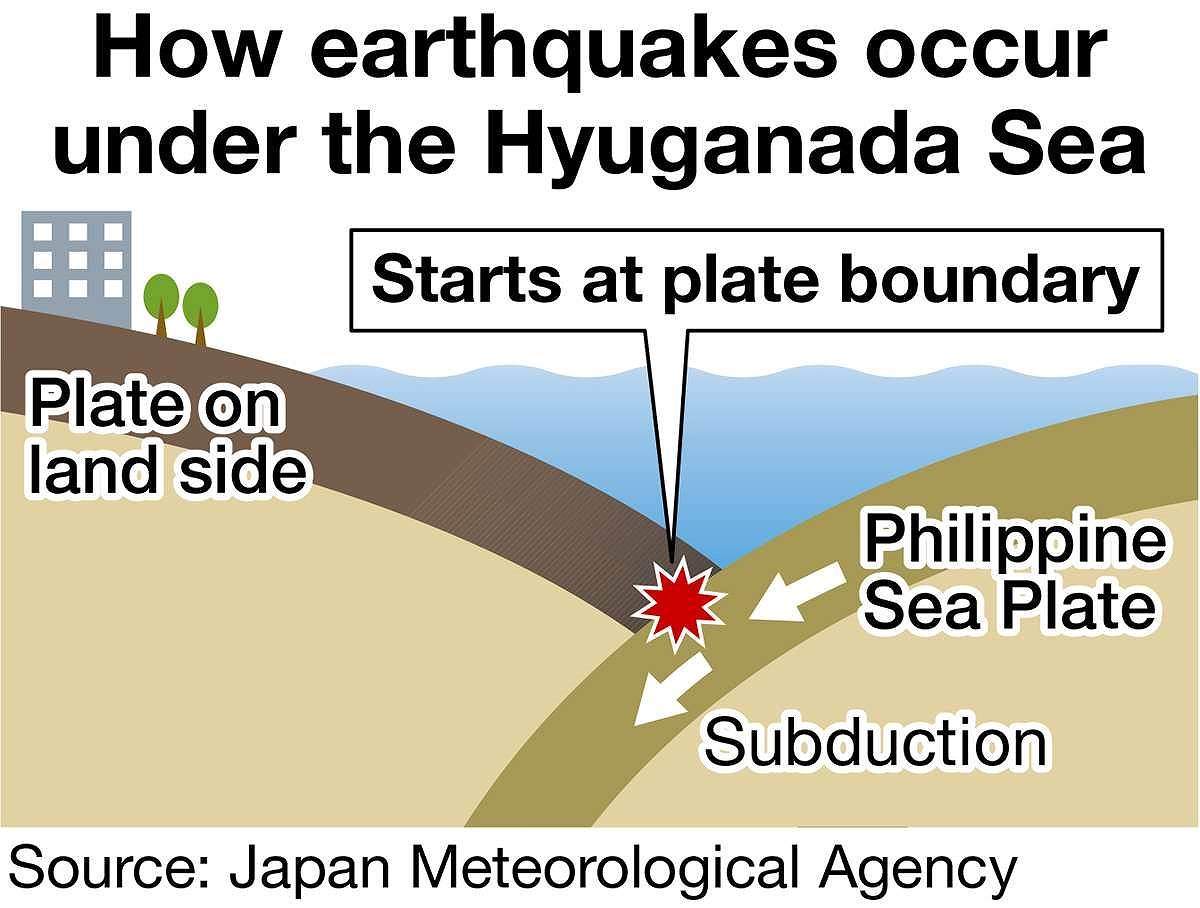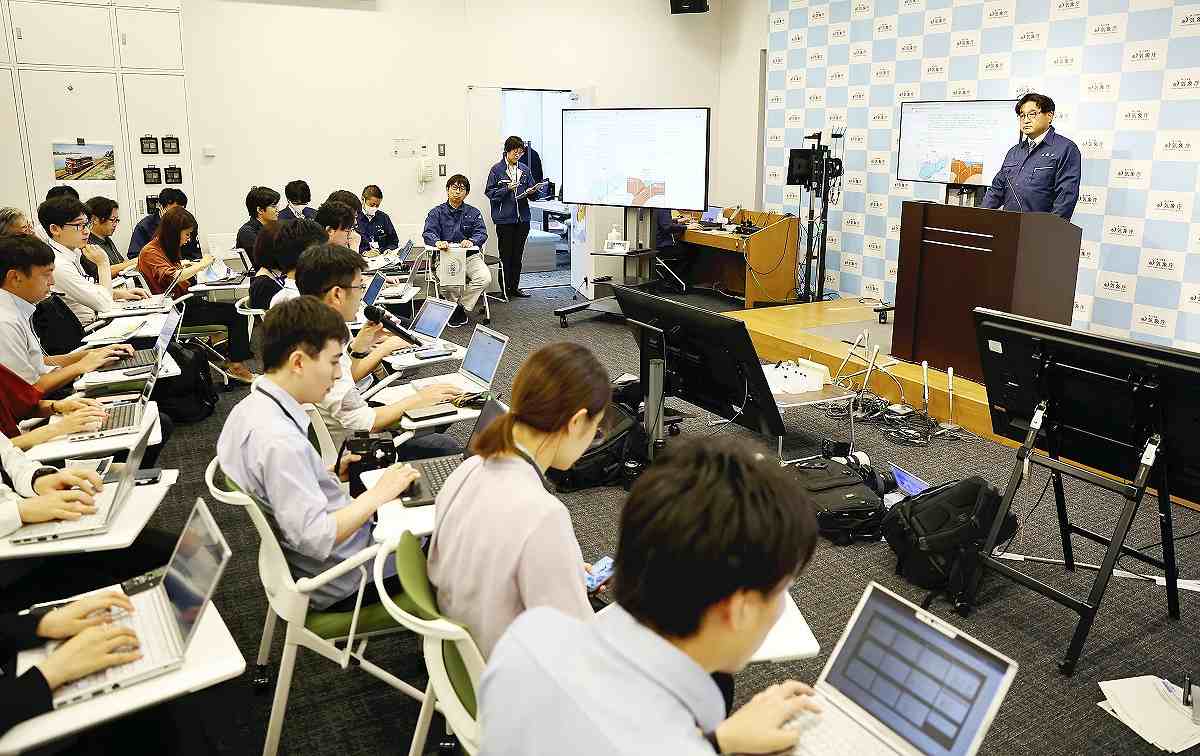Strain on Tectonic Plates Under Japan’s Hyuganada Sea Causes Earthquakes; Has Resulted in More than Five M-7 Quakes Since 1931

10:41 JST, August 10, 2024
Strain accumulating at the boundary between tectonic plates under the Hyuganada Sea off Miyazaki Prefecture has caused earthquakes of magnitude 7 or greater five times since 1931, before the latest one on Thursday.
The Hyuganada Sea, where Thursday’s earthquake occurred, is on the western edge of the likely epicenter of a possible Nankai Trough earthquake.
The Nankai Trough lies beneath the Pacific Ocean and runs parallel to the Japanese coast from Shizuoka Prefecture, in the Tokai region, to Kyushu.
The Hyuganada Sea is an area where the Philippine Sea Plate (on the ocean side) subducts beneath the plate on the land side, leading to the accumulation of stress underground. This has caused earthquakes of Thursday’s scale to occur numerous times in the past. The Japan Meteorological Agency announced that Thursday’s earthquake had a magnitude of 7.1 and was caused by a shift in the boundary between the two plates.
It was smaller than the massive magnitude 8 quake that has been predicted for the area.
Since 1931, there have been five earthquakes of magnitude 7 or greater in the Hyuganada Sea, the last of which occurred in 1984, according to the agency.
The government’s Headquarters for Earthquake Research Promotion has determined that earthquakes of about magnitude 7 to 7.5 occur on average every 20 years.
In 2022, it estimated the probability of an earthquake of this scale occurring within the next 10 years to be about 40% and within 30 years to be about 80%.
Prof. Masanao Shinohara of the University of Tokyo, who specializes in undersea seismology, said plate boundary earthquakes like Thursday’s “can affect the surrounding boundary surfaces if the boundary surface shifts.”
Related Tags
"Society" POPULAR ARTICLE
-

M4.9 Earthquake Hits Tokyo, Neighboring Prefectures
-

M7.5 Earthquake Hits Northern Japan; Tsunami Waves Observed in Hokkaido, Aomori and Iwate Prefectures
-

Tsukiji Market Urges Tourists to Avoid Visiting in Year-End
-

Israeli Tourists Refused Accommodation at Hotel in Japan’s Nagano Pref., Prompting Protest by Israeli Embassy and Probe by Prefecture
-

M5.7 Earthquake Hits Japan’s Kumamoto Pref., Measuring Upper 5 Intensity, No Tsunami Expected
JN ACCESS RANKING
-

Keidanren Chairman Yoshinobu Tsutsui Visits Kashiwazaki-Kariwa Nuclear Power Plant; Inspects New Emergency Safety System
-

Imports of Rare Earths from China Facing Delays, May Be Caused by Deterioration of Japan-China Relations
-

University of Tokyo Professor Discusses Japanese Economic Security in Interview Ahead of Forum
-

Japan Pulls out of Vietnam Nuclear Project, Complicating Hanoi’s Power Plans
-

Govt Aims to Expand NISA Program Lineup, Abolish Age Restriction

























